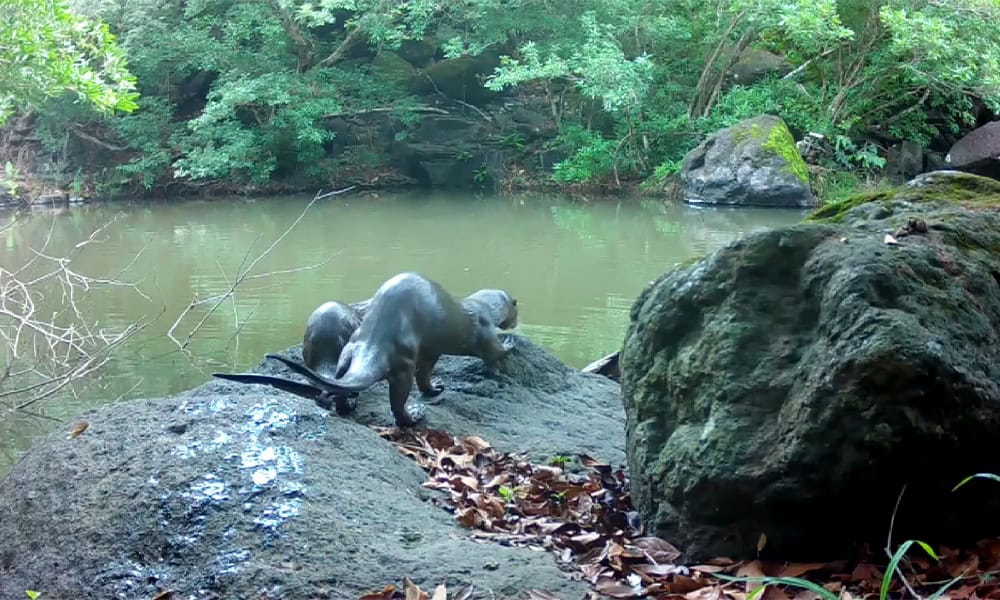Today we meet the most aquatic member of Costa Rica’s weasel family, the neotropical river otter. The neotropical river otter (Lontra longicaudis) is known as the nutria or perro de agua in Spanish. There’s another species of animal called a nutria in English. It looks like a mix between a rat and a beaver and is native to South America, and it pops into my mind’s eye every time I use the term. I’ve asked property owners where I’ve worked if they’ve heard of it and nobody has, so the term is slightly confusing only to me apparently.
Neotropical river otters are one of seven members of the weasel family found in Costa Rica and the one most closely associated with water. Their streamline bodies are perfectly designed for their aquatic environment. Their long tail and webbed feet propel them quickly through water. Their brown coat is made of two different types of fur. The outer layer is longer and oily which keeps the inner layer of insulating underfur from getting wet.
As you would imagine, with a body designed for swimming, a huge percentage of their diet consists of creatures that live underwater. Able to hold their breath for up to eight minutes, neotropical river otters hunt mostly fish and crustaceans, sometimes flipping over submerged rocks in pursuit of prey hiding underneath. After a filling meal, these otters like to do their business on prominent rocks or logs along the waterways where they live. This scat is an ideal way for researchers to dissect their diet.
Most studies have found that, though they will eat things like mollusks, frogs, and aquatic invertebrates, the vast majority of their diet consists of a variety of fish and freshwater shrimp. I recently accidentally leaned onto a pile of otter scat as I pulled myself onto a big rock on the side of a stream and had to pull a few fish bones from the palm of my hand. A closer inspection of the scat showed that it was entirely made of fish scales and bones.
Neotropical river otters have a large range globally, being found from northwest Mexico down to central Argentina. At some point in history, they were found throughout much of Costa Rica, but habitat loss and a history of hunting have taken their toll. These days they’re limited to areas with large patches of undisturbed habitat with unpolluted waterways.
I have had very little luck documenting neotropical river otters during my time in Costa Rica. I’ve never seen one with my own eyes. I’ve only recorded them seven times with my camera traps, a few times in Osa and a few times in northern Guanacaste. Over the last two weeks I’ve been working with a scientist named Dr. Christopher Bunt to install an underwater camera trap in Guanacaste.
We installed the camera alongside the rock where I accidentally smashed my hand into boney otter poop, so my hope is that those otters will return, and I’ll add some underwater shots to my otter video collection. Until that day comes, I can only share some clips of my seven otter camera trap videos.
Postscript
Everything in the above article was true at the time of writing but between the day I sent it and today I’ve had a fantastic amount of luck in the otter department. First, I got to see a neotropical river otter in person, twice actually, swimming in the same small river where I installed the underwater camera trap. Second, the otter I saw was recorded a few times by the underwater camera trap. Luckily the article wasn’t published right away, so I had time to add the new underwater clips to the video below. Enjoy!
About the Author
Vincent Losasso, founder of Guanacaste Wildlife Monitoring, is a biologist who works with camera traps throughout Costa Rica








